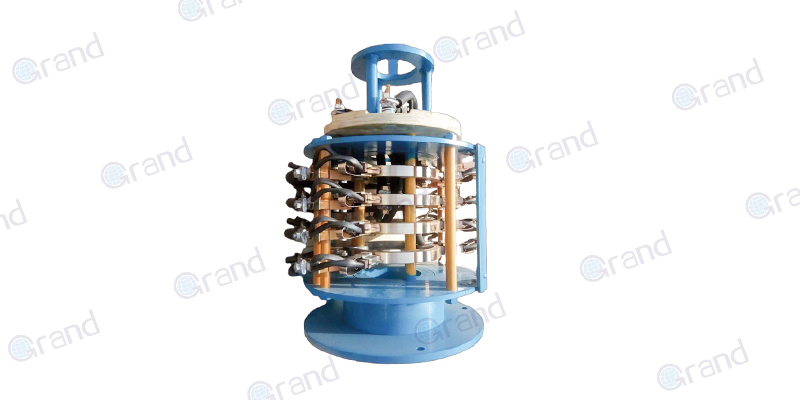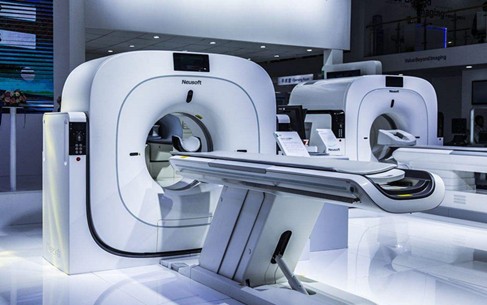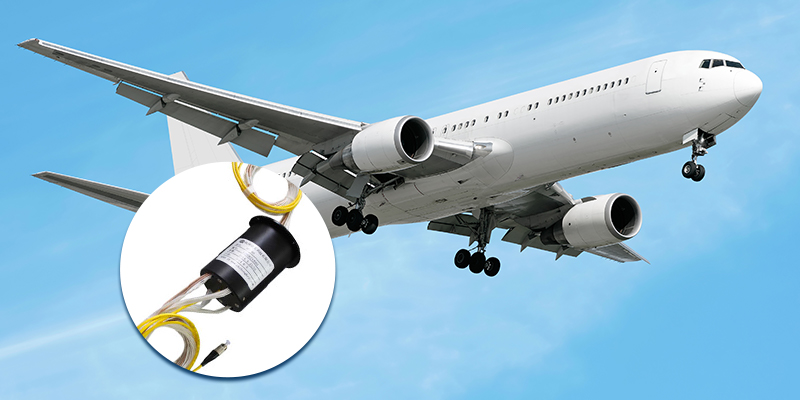Traditional single-turn slip rings are central to the effective functioning of electromechanical systems. Employing these ingenious devices of varying sizes and complexities, electromechanical systems ensure the uninterrupted flow of electrical signals or power from a stationary part to a rotating one. The operation of these slip rings relies on a simple yet effectual principle: a conductive “ring” attached to the rotating part and a touching “brush” or “wiper” that connects to the stationary component. This design establishes an ever-changing point of contact, permitting a steady flow of electricity. These traditional single-turn slip rings tackle the challenges of tangled wiring in rotating structures, thereby enabling a streamlined and efficient operation.
Introduction to Traditional Single-Turn Slip Rings and Their Specific Applications
While various types of slip rings populate the market to cater to a range of industrial needs, traditional single-turn slip rings form a time-honored base in this sphere. Uniquely designed for equipment and systems that demand 360-degree unrestrained rotation, these devices incorporate a simplistic yet robust design that provides reliable and steady signal or power transfer during one complete rotation.
They exist as an essential facet in an array of applications. For instance, wind turbines, which require consistent power delivery to the rotating blades, are a favoring site for such slip rings. Their reliable operation also brings significant value to rotating platforms such as revolving doors, turntables, and rotating tanks. Additionally, advanced tech areas such as robotics, radar systems, and certain spacecraft also leverage these traditional single-turn slip rings to fulfill the requisite for maintaining electrical continuity in rotating assemblies. Thus, across industries and applications, these slip rings uphold their relevance by seamlessly catering to various rotary motion needs.

Design and Construction of Traditional Single-Turn Slip Rings
Detailed explanation of the structure and design elements.
The fundamental design of traditional single-turn slip rings revolves around providing reliable electrical contact while allowing unrestricted rotation. The primary components of these slip rings are the rotor and the stator. The rotating part, or the rotor, connects with the rotating machinery component. Attached to the rotor are conductive rings – it’s these rings that give the device its name. Conversely, the stationary part identified as the stator connects to static portions of the machine. The conductive brushes, or wipers, are mounted onto the stator, maintaining contact with the rotating conductive rings. As the rotor spins, the brushes maintain their position, sliding over the rings to facilitate the transmission of power or signals. This configuration is designed to ensure a constant, consistent electrical connection without hindering rotary motion. Additional features such as contact materials, protective housing, and mounting mechanisms are also incorporated based on specific application needs.
Discussion of materials commonly used and why.
Choosing the right material for the conductive parts of slip rings is vital, given the impact on performance, durability, and overall lifespan of the device. Rings and brushes usually rely on metals with high conductivity, low electrical noise, and good wear resistance. For instance, gold is often used due to its excellent conductivity, resistance to corrosion and oxidation, and its superb adaptability for high-frequency signal transmission. Silver, albeit more prone to oxidation, is another favored choice for its superior conductivity. Considerations like load requirements and operating environment also come into play when choosing materials. For instance, for high currents, rings and brushes composed of copper or copper alloys are frequently employed. Brushes can also be made of precious metal alloys, graphite, or composite materials depending on the application’s specific requirements. The choice of insulation and casing materials largely depends on the environment in which the slip ring operates. For instance, units operating in humid, corrosive or high-temperature environments might incorporate special seals or use materials such as stainless steel to ensure protection and longevity.
Applications of Traditional Single-Turn Slip Rings
Detailed discussion on why single-turn slip rings are preferred in certain applications.
Traditional single-turn slip rings show preference in specific applications based on their unique characteristics. Often more economical and compact than other designs, these slip rings make a hassle-free installation and quiet operation possible. Since they facilitate continuous 360-degree rotation, they are especially suitable for applications involving unrestricted, cyclic rotation. The single-turn design is thoughtfully created to ensure minimum friction which reduces wear and tear and enhances the device’s longevity, making it a reliable choice for long-term applications. Importantly, it allows simultaneous transfer of multiple circuits, thereby providing versatility in handling different types of signals and power, from sensitive data to high electrical loads. The combination of these factors makes traditional single-turn slip rings an ideal option for a broad range of requirements.
Real-world examples and case studies.
In the real world, traditional single-turn slip rings are visible in countless applications. For instance, wind turbines, enable the transfer of power and signals from the stationary nacelle to the rotating hub and blades. This role is crucial to the functioning of turbines: aiding in the management of blade pitch, monitoring stress and temperature, and ensuring smooth rotation.
Another use case can be found in the field of medical imaging. CT scanners, which use rotating gantries to capture detailed images of the human body, rely on single-turn slip rings to carry power and signals between the stationary and moving parts, thereby enabling the continuous rotation necessary for capturing 360-degree images.

Aerospace and defense are additional arenas where traditional single-turn slip rings play a vital role. Radar systems, for instance, require accurate rotation in conjunction with reliable transmission of power and signal data. These slip rings ensure that radar antennas and other sensory equipment function seamlessly without being hindered by wiring restrictions.

These examples underscore the versatile implementations of traditional single-turn slip rings, proving their irreplaceable value across fields and the pivotal role they play in ensuring the flawless operation of complex rotary systems.
Factors to Consider When Choosing Traditional Single-Turn Slip Rings
Evaluation of parameters, such as the number of circuits, voltage and current ratings, etc.
Selecting the right traditional single-turn slip ring for an application requires a deep understanding of the parameters involved. One key element is the number of circuits – the more signals or currents needed to be transferred, the more circuits required. Moreover, voltage and current ratings are essential considerations. The slip ring must be able to efficiently and safely carry the currents and voltages intended in the system without overloading, leading to overheating or potential equipment damage. Also to note is the speed of rotation, which determines the rotational velocity the slip ring must accommodate without excessive wear or loss of connection. Dimension constraints, insulation requirements, and the type of signals being transferred (such as digital, analog, or high-frequency signals) are other key criteria to consider. Choosing a slip ring that precisely meets these parameters can ensure compatibility, safety, and optimal performance.
Impact of environmental conditions on their performance.
The operating environment significantly affects the performance, reliability, and lifespan of traditional single-turn slip rings. External factors such as temperature fluctuations, humidity, dust, and vibration can impact the contact reliability and overall device longevity. For example, a high-temperature environment may require slip rings with special materials and designs that tolerate the heat without compromising the performance. Similarly, if dust or moisture infiltration is a potential issue, a slip ring designed with appropriate sealing or special enclosures may be needed. In environments dealing with intense vibrations, slip rings designed to be robust and stable would be key. Essentially, any slated slip ring must be robust and resilient enough to operate reliably under the specific environmental conditions it will be exposed to.
Preference for reputable manufacturers and the significance of good customer service.
The manufacturer’s reputation is an often overlooked but crucial factor in the selection process. A well-established manufacturer with a rich history of producing high-quality slip rings can offer assurance of reliability and performance. It’s recommended to survey the company’s track record, certifications, and testimonies to determine its credibility. Also, an aspect pivotal to the user’s experience is the provision of excellent customer service. Does the manufacturer provide detailed installation instructions, user guides, and troubleshooting support? Do they respond promptly and efficiently to queries and concerns? Adequate after-sale support can be the key to maximizing the potential of the equipment and early resolution of any issues that may arise. Therefore, opting for a manufacturer with a demonstrated commitment to customer satisfaction can greatly enhance the overall experience of procuring and using traditional single-turn slip rings.
User Concerns Regarding Traditional Single-Turn Slip Rings
Address the apprehensions about installation and maintenance, highlighting manufacturer support.
Installation and maintenance of traditional single-turn slip rings can seem daunting, particularly to the unfamiliar. However, these devices are designed for ease of installation and upkeep with a manageable number of components to handle. More importantly, reputable manufacturers often provide comprehensive user manuals detailing proper installation procedures and also give advice on potential troubleshooting steps. In addition, good manufacturers offer dedicated customer support teams to assist with any installation or operation difficulties, thus easing the process remarkably. Regular maintenance is typically straightforward involving just routine inspection, cleaning, and, if necessary, component replacement. User-friendly resources from the manufacturer and routine checks can ensure the smooth, efficient operation of the slip rings.
Discuss concerns about their durability and the importance of regular maintenance.
Durability is a common concern, especially in demanding or harsh environments. The lifespan of single-turn slip rings largely depends on construction quality, application specifics, and importantly, effective maintenance. Manufactured using robust materials and engineered designs, these slip rings are built for substantial durability. Nonetheless, conducting regular upkeep – including inspection for wear and damage, cleaning off accumulated debris, and ensuring proper lubrication where applicable – can go a long lengths in preserving the slip ring’s integrity over time. Also, overheating can significantly affect durability; therefore, monitoring the device for signs of excessive heat can also be beneficial. Remember, a well-maintained slip ring will typically guarantee longer service life and improved reliability.
Discuss cost viability and return on investment.
While the upfront cost of slip rings may seem substantial, it’s essential to consider the bigger picture framed by long-term returns on investment. Traditional single-turn slip rings’ ability to facilitate uninterrupted rotation without tangled wires significantly reduces the chances of equipment malfunction or damage from wire tension or snap, translating to lower maintenance costs and downtime. Additionally, their contribution to improving the performance and efficiency of rotating equipment helps boost overall productivity. In this light, despite initial costs, the value they add over time makes these slip rings an investment worth considering. As always, it’s important to balance cost with the application requirements and the expected performance and longevity of the slip ring to ensure a wise investment.
Maintenance and Troubleshooting of Traditional Single-Turn Slip Rings
Tips for Effective Cleaning and Maintenance
Regular cleaning and careful maintenance are critical for enhancing the performance and extending the life of traditional single-turn slip rings. The objective of cleaning is to remove debris or dust that might have accumulated on the contact surfaces, which can cause disruption in the power or signal transfer. It’s generally recommended to use a lint-free cloth and a mild cleaning solution, being careful not to use any harsh chemicals that might damage the components.
Conductive grease can also be applied to the contact surface to reduce friction but in a controlled quantity to avoid seeping into the insulation. It’s essential to inspect the device for wear and tear regularly, checking for any unusual scratches, indentations, or burns on the slip ring surface. Besides, monitoring for unusual vibrations, noises, or overheating can also provide early indicators of potential issues. Following the manufacturer’s maintenance guidelines and schedule can aid significantly in maintaining the slip ring’s efficiency and longevity.
Common Issues Experienced and Troubleshooting Methods
Regardless of their robustness and reliability, like any mechanical device, traditional single-turn slip rings can also run into issues. One common problem is the fluctuation or disruption in signal data or power, often resulting from worn-out brushes or fouled contact surfaces. Regular cleaning and timely replacement of brushes can help avert such issues.
Overheating can occur due to excessive current, poor contact, or insufficient cooling. In such cases, it’s crucial to verify if the device is operated within its rated current and whether the device’s ventilation is adequate.
Excessive noise or vibration can suggest an issue with the mounting, misalignment of components, or bearing wear. In these instances, an inspection of the mounting mechanism, realigning components, or replacing worn-out bearings can help resolve the problem.
It’s always advised to consult the manufacturer’s troubleshooting guide or seek the help of their technical support for any serious or persistent issue, as they are equipped with the necessary expertise to deal with such situations appropriately and safely.
Looking Forward: Advances and Trends in Traditional Single-Turn Slip Rings
Review of Recent Technological Advancements
Over the past years, manufacturers and researchers have dedicated significant effort to enhancing the performance and durability of traditional single-turn slip rings. Notable advancements include the development of advanced materials and coatings to improve electrical contact, reduce wear, and thereby extend their lifespan. Balancing techniques have been adopted to mitigate vibrations, ensuring smoother operation and better performance. For high-speed applications, manufacturers have developed specialty designs to tolerate increased rotational velocities without excessive wear or loss of connection.
Future Trends: Integration with Newer Technologies
The evolution of slip rings is expected to continue, aligning with advancements in other technology sectors. With the rise of digitalization and Industry 4.0, the integration of smart technologies into slip rings could be a significant future direction. Enhanced features, including Internet of Things (IoT) integration for real-time monitoring, predictive maintenance, local/remote diagnostics, and advanced fault detection, could become a standard feature of next-generation single-turn slip rings. Integration with machine learning technologies could allow for smarter and more energy-efficient operations.
Mitigating User Concerns through Advancements
These advances have the potential to significantly mitigate common user concerns. Enhanced durability via advanced materials could mean less frequent maintenance and longer lifetimes, reducing the total cost of ownership. The introduction of smart features could simplify installation and maintenance processes and provide early warnings of issues through predictive maintenance capabilities, minimizing downtime. Real-time monitoring and diagnostics could make identifying and rectifying problems faster and more efficient, thereby supporting better system reliability and easing users’ concerns about troubleshooting and maintenance. These improvements together could make traditional single-turn slip rings even more user-friendly, reliable, and cost-effective, enhancing their appeal for various applications.
Conclusion
Despite the advent and steady progress of technology, traditional single-turn slip rings remain an integral component in electromechanical systems. Their continued relevance and adaption to new methodologies reinforce their vital role for the foreseeable future. This article navigated through various aspects of these slip rings. From a close examination of their design and construction to addressing frequently asked questions, the discussion provided an in-depth understanding of these components. Furthermore, the article shone a light on their maintenance and troubleshooting, emphasizing their practical real-world handling. With an eye on the future, we recognize the perpetual importance of this critical link within electromechanical setups.
FAQs about Traditional Single-Turn Slip Rings
Q: What is a traditional single-turn slip ring?
A: A traditional single-turn slip ring is an electromechanical device used to transmit power and data signals from a stationary to a rotating structure. It rotates with the moving part of the equipment, providing continuous, unbroken transmission for applications needing unrestricted 360-degree rotation.
Q: Why should I choose a single-turn slip ring for my application?
A: Single-turn slip rings are often chosen due to their compact size, cost-effective design, and ability to facilitate a continuous electrical connection between stationary and rotating parts. They are ideally suited for applications needing unrestricted rotation.
Q: What are some common applications for single-turn slip rings?
A: Single-turn slip rings are commonly found in applications such as wind turbines, medical imaging devices such as CT scanners, and radar systems in aerospace and defense. They help ensure continuous, stable rotation and reliable data transmission.
Q: How do I install and maintain a traditional single-turn slip ring?
A: Installation and maintenance routines typically involve fixing the slip ring onto the rotating part, connecting the appropriate cables, and performing regular checks for any signs of wear or damage. Conducting necessary cleaning, ensuring effective operation within specified parameters, and replacing brushes or other components when needed are also part of maintenance.
Q: What factors should I consider when purchasing a single-turn slip ring?
A: When purchasing a single-turn slip ring, consider factors such as the number of circuits, voltage, current ratings, rotational speed, operating environment, manufacturer reputation, and after-sale customer service along with your specific application requirements.
Q: What are the most common issues faced with these slip rings and how can I troubleshoot them?
A: Common issues with slip rings range from signal interruptions, overheating, and excessive noise, to vibrations. These can typically be addressed by keeping the contact surfaces clean, ensuring the device operates within its rated current limit, inspecting and correcting mounting defects, or replacing worn-out components. Do refer to the manufacturer’s troubleshooting guide or consult their technical support for persistent issues.
See What We Can Do
